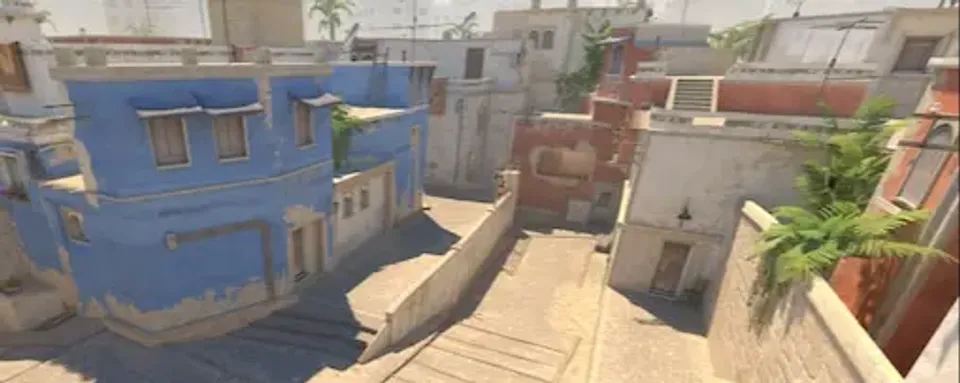
Mirage is one of the most popular maps in CS2, offering a perfect balance of strategy and action. To succeed on this map, players must master Mirage callouts in CS2, which are specific names for key areas on the map. These callouts are important for proper communication, allowing teams to coordinate attacks and defenses more efficiently.
In this guide, we’ll explore all the Mirage map callouts, their strategic importance, and practical tips to enhance your gameplay. Whether you’re new to CS2 or a seasoned player, this guide will help you sharpen your skills and improve your teamwork.
What Are Callouts?
Callouts are location names used in CS2 to identify specific parts of a map. These names help players quickly communicate enemy positions, plan strategies, and execute attacks or defenses. For example, shouting “Enemy at Tetris!” immediately informs your teammates where to focus their attention.
Why Are Callouts Important?
- Improves Team Communication: Clear callouts prevent confusion during intense gameplay.
- Enhances Strategy: Knowing the right callouts helps your team execute coordinated plays.
- Increases Awareness: Familiarity with callouts ensures you can respond quickly to changing situations.

READ MORE: All Nuke Callouts in CS2: Full Guide

Tips for Beginners:
- Practice with teammates to memorize Mirage callouts.
- Use concise, consistent terms to avoid confusion.
- Stay calm and provide accurate callouts during matches.
Key Zones on Mirage
Mirage is divided into several crucial areas, each with its own strategic importance:
Zone | Description |
T-Spawn | Starting point for the Terrorists (Ts) where the attack begins. |
A Site | A bomb plant zone requiring strong coordination for attacks or defenses. |
B Site | An alternative bomb plant site, harder to defend but offers tactical advantages. |
Mid | The central area providing control over rotations to both bombsites. |
Understanding these zones is essential for mastering Mirage CS2 callouts.
Detailed Callouts for Each Zone

A Site Callouts
A Site is one of the most critical areas on Mirage. Knowing Mirage A site callouts can make or break your team’s success:
- Tetris: A stack of boxes near the site, used by Ts for cover during pushes.
- Sandwich: A narrow spot between Tetris and the wall, great for hiding.
- Firebox: A corner at the back of A Site, often used for post-plant defense.
- Triple: Three stacked boxes in the middle of the site, providing cover for defenders.
- Ninja: A sneaky spot behind the boxes at the far back, perfect for surprise plays.

Strategies for A Site:
- Use smokes to block off Jungle and Connector.
- Call out positions like “Tetris” or “Firebox” to focus enemy defenders.
B Site Callouts
B Site is more challenging to control, but with good teamwork and clear Mirage B site callouts, it can be secured effectively:
- Apartments (Apps): A high hallway leading to B Site, often used by Ts for entry.
- Bench: A small area near the back of the site, offering cover for defenders.
- Default: The most common bomb plant spot on B Site.
- Back Site: The farthest point of B Site, useful for post-plant positions.
- Van: A truck parked near the entry to B Site, offering a strong angle for CTs.

Strategies for B Site:
- Communicate enemy positions like “Apps” or “Van” for better coordination.
- Use molotovs to flush out defenders hiding in tight spots like Back Site or Bench.
Mid Callouts
Mid is the map’s central hub, providing access to A and B Sites. Mastering CS2 Mirage callouts for Mid is crucial for controlling rotations:
- Top Mid: The high point at the start of Mid, offering vision and control.
- Window: A CT position overlooking Mid, often contested by snipers.
- Connector: A pathway linking Mid to A Site, critical for rotations.
- Catwalk (Cat): A raised path leading from Mid to B Site.
Tips for Controlling Mid:
- Smokes and flashes are essential for gaining control.
- Call out CT positions like “Window” or “Connector” to focus attacks.

READ MORE: What CS2 Cases Have Karambits

Practical Use of Callouts
Example:When attacking A Site, clear callouts like “Tetris” or “Sandwich” help your team pinpoint enemy positions and neutralize threats efficiently. Similarly, on B Site, knowing if the enemy is at “Van” or “Bench” allows for precise plays.
Team Communication Tips:
- Be clear and concise: Use established Mirage callouts.
- Practice regularly: Familiarity with callouts ensures quick and accurate communication.
- Stay calm: In high-pressure situations, clear callouts can make all the difference.
Common Mistakes and Tips for Improvement
Mistake | Solution |
Using incorrect callouts | Learn and practice the correct Mirage callouts. |
Delayed callouts | React quickly to enemy positions to inform your team. |
Confusion among teammates | Ensure everyone uses the same terminology. |

Tips for Memorizing Callouts
- Play practice matches to familiarize yourself with each callout.
- Use maps or guides to visualize and learn callout names.
Mastering Mirage callouts is essential for effective communication and gameplay. Whether it’s A site callouts like Tetris and Firebox or B site callouts such as Apps and Default, knowing these terms can elevate your team’s strategy and performance. Practice regularly, communicate clearly, and watch your gameplay improve!







No comments yet! Be the first one to react